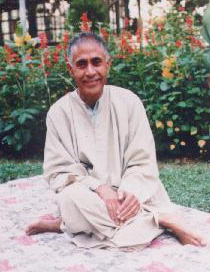Swami Lakshman Joo
Fathers of the Kashmir Monistic Saiva Thought, who flourished in the valley from ninth to thirteenth century A.D., were erudite scholars and eminent saints. They recorded what they practised and accomplished thereby. Later, there were interruptions in this line of thought. and it was mostly the ritualistic faith that kept the tradition alive. After Sivopadyaya, the eighteenth century scholar-saint who wrote commentaries and books of the kind, there appeared saints of the order during nineteenth century. But they, only taught the lore and made no use of pen. Early twentieth century saw the Kashmir of past glory blessed with a son who, not only practised and lived this wonderful philosophy-the Trika Saiva of Kashmir named Pratyabhijna Darsana-but also disseminated its postulates by teaching and writing among the seekers of Truth in the country and among those from foreign lands.
 Swami Lakshman Joo
Swami Lakshman Joo
A luminary of the first magnitude on the spiritual firmament of modern times, Lakshmana Raina was born at Namchibal in Srinagar (Kashmir) on May 9, 1907. He showed signs of spiritual fertility from his very birth. Finding the child far too precocious, his noble, god-fearing and devout parents put him in the tutorage of Swami Rama, who had been their family priest, and saint of high order in the tradition of the refined Tantric Monism of Kashmir known as the Trika system. From his early childhood Lala Saab cast a spell not only over his parents and relatives but also on Swami Rama. At sixteen, however, the boy was ripe enough for being initiated by Swami Mahtab Kak, who had been commissioned by his illustrious preceptor just betore entering mahasamadhi, when the promising Laksmana was only seven years old. The enterprising and well- to-do parents could not prevail upon the young boy, to enter the life of a householder or even to take up a job.




